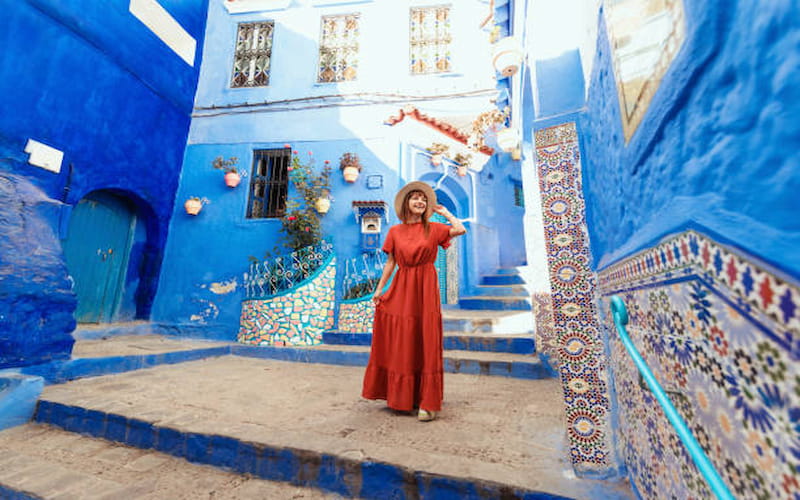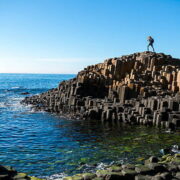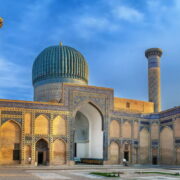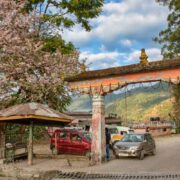
What to Wear in Morocco: A Traveler’s Guide
Thinking of visiting Morocco? What to wear in Morocco is one of the most frequently asked questions by a traveler considering the fact that the country is a unique mix of culture, religion, and climate. Morocco is a Muslim dominated country and therefore dressing is a sensitive issue, and modest dressing is admired, with the exception of the tourist centers. Although you are not required to dress head to toe, it is respectful to dress and you will get smiles and a smoother trip. But no matter whether you are strolling through the souks in Marrakech or trekking in the Sahara, it is important to pack smart. In addition, you must also make sure you have your Schengen Visa to Morocco in case you are combining European travel and your Moroccan holiday.
What to Wear in Morocco: A Traveler’s Guide
1. Understand Moroccan Culture and Climate
Morocco’s diverse geography — from deserts to mountains to coastlines — means weather conditions vary widely. However, cultural norms remain consistent: modesty is important, especially in rural or conservative areas.
-
Cultural Norms: Morocco is moderately conservative. Locals appreciate tourists who make an effort to dress modestly.
-
Religious Sensitivity: While Morocco is more relaxed than other Islamic countries, it’s respectful to avoid overly revealing outfits.
-
Climate Awareness: Summers can be scorching (especially in the south), and winters in the mountains are chilly. Dress accordingly but modestly.
2. What Women Should Wear in Morocco
Women should dress modestly to avoid unwanted attention and to show cultural sensitivity.
Recommended Clothing for Women:
-
Loose-fitting tops: Opt for shirts that cover the shoulders and cleavage.
-
Maxi skirts or long dresses: Comfortable and culturally appropriate for most regions.
-
Loose trousers or jeans: Lightweight materials like cotton or linen work well in heat.
-
Scarf or shawl: Great for sun protection or covering hair when visiting mosques or conservative areas.
-
Swimwear: Allowed in resorts or beach areas, but cover up with a kaftan or wrap when not swimming.
-
Jacket or sweater: Needed for cooler evenings or mountain areas.
What to Avoid:
-
Short shorts, mini-skirts, and revealing tops.
-
Tight clothing, especially leggings without a tunic or long top.
-
Transparent fabrics without proper lining.
3. What Men Should Wear in Morocco
Men have slightly more flexibility in what they can wear, but modesty is still appreciated.
Recommended Clothing for Men:
-
T-shirts and polos: Breathable fabrics are ideal for the heat.
-
Long pants or knee-length shorts: Avoid overly short athletic shorts in public spaces.
-
Button-down shirts: Perfect for dinners or city walks; linen is a good option.
-
Lightweight jackets: Useful in the Atlas Mountains or coastal evenings.
What to Avoid:
-
Going shirtless in public spaces (except beaches).
-
Wearing shorts in religious or rural areas (opt for long pants instead).
4. Footwear Advice for Morocco
Comfort is essential, as Moroccan cities often involve lots of walking on cobblestones or uneven surfaces.
-
Sandals or flip-flops: Ideal for the beach or riads.
-
Closed-toe shoes: Great for city tours and desert excursions.
-
Hiking shoes: Recommended for the Atlas Mountains or trekking.
-
Avoid high heels: They are impractical on uneven surfaces.
5. Packing for the Desert (Sahara Travel)
The desert can be blazing hot during the day and surprisingly cold at night.
Desert Essentials:
-
Lightweight long-sleeved shirts and pants: For sun protection.
-
Sunglasses and a wide-brimmed hat: Crucial for sun exposure.
-
Scarf or turban (cheche): Protects from sand and sun.
-
Warm fleece or jacket: Nights can be freezing, even in summer.
6. Clothing Tips for Visiting Mosques and Religious Sites
While most mosques in Morocco are off-limits to non-Muslims, places like the Hassan II Mosque in Casablanca welcome visitors.
-
Cover shoulders, knees, and preferably arms.
-
Women should carry a scarf to cover their head if required.
-
Avoid flashy or revealing clothing.
7. Beachwear Etiquette in Morocco
Morocco has beautiful beaches, especially in places like Essaouira and Agadir. However, dress codes are still conservative compared to Western norms.
-
Bikinis are fine at resorts and tourist beaches, but cover up when walking to/from the beach.
-
Men can wear swimming trunks, but speedos are uncommon.
8. Seasonal Clothing Guide
Summer (June to August):
-
Light, breathable clothing
-
Sun hats, sunglasses
-
Modest swimwear
Autumn (September to November):
-
Layered clothing for warm days and cooler evenings
Winter (December to February):
-
Sweaters, jackets, especially for mountain areas
Spring (March to May):
-
Ideal time to visit – pack lightweight but modest clothing
9. Shopping for Traditional Moroccan Clothing
Want to blend in or take home a unique souvenir? Moroccan clothing is stylish and comfortable.
-
Djellaba: A long, hooded robe worn by both men and women. Great for layering and modesty.
-
Kaftan: Elegant and often worn by women, especially for special occasions.
-
Babouches (slippers): Traditional leather footwear found in souks.
Wearing traditional attire not only shows respect but also adds a unique flavor to your travel experience.
10. General Packing Tips
-
Pack light layers: Morocco’s temperatures fluctuate dramatically.
-
Bring a foldable tote or scarf: Useful in many situations — sun protection, modesty, or even as a beach mat.
-
Avoid overly flashy jewelry or accessories: It can attract unwanted attention or be impractical in crowded markets.
Conclusion
The trick in dressing in Morocco is to strike a balance between being culturally considerate and being comfortable. The modest dress does not imply that you should sacrifice style, and flowy materials, bright colors, and traditional Moroccan attires can make your travel wardrobe look charming. No matter where you go to shop in Fes, swim in Agadir, or hike the Atlas Mountains, dressing right will make your experience a lot better and help you better connect with the locals. To individuals who intend to have a wider itinerary, it is important to apply early to have a Morocco Visa to ease the travel. Pack clever, dress appropriately, and have a great time in Morocco!
Recent Posts
10-Day Ireland Travel Plan for Indians – Visa, Budget & Places to Cover
Uzbekistan Travel Trends 2026 – What Indian Travellers Prefer
What Are the Must-Visit Attractions in Darjeeling and Gangtok for a Scenic Mountain Holiday?
All Categories
Tags

Dubai




